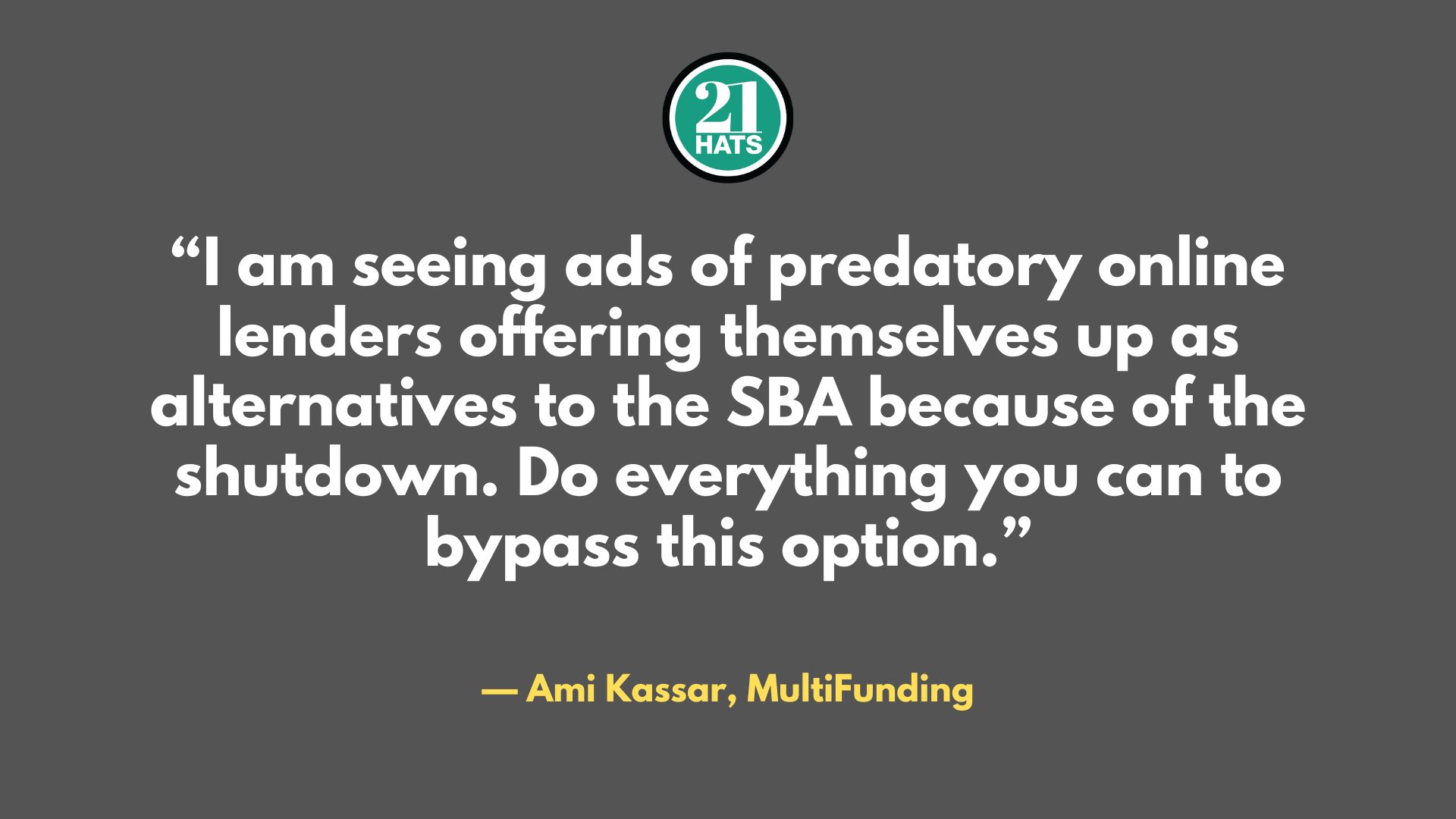When the Government Shuts Down, So Does SBA Lending

A small business owner trying to buy equipment, refinance debt, or expand operations suddenly can’t move forward. Sellers waiting for deals to close are left hanging.
By Ami Kassar
When the federal government shuts down, most people think about the visible stuff—national parks closing, federal workers missing paychecks, travel complicated by delays. But for small business owners trying to get financing, the impact is quieter but more painful. The entire SBA lending system—the one that helps entrepreneurs buy real estate, purchase equipment, and expand their businesses—comes to a standstill.
There are two types of SBA lenders, and both get stuck. General Process Lenders send complete loan packages to the SBA for review and approval. Those loans can’t move forward without government employees doing the work. When they’re furloughed, everything stops. Preferred Lenders, who have earned the authority to make their own credit decisions, still need to send one final request to the SBA to get an official loan number before they can close. That system goes dark too. No employees, no approvals, no closings.
In the days leading up to a shutdown, lenders who’ve been through this before scramble to get ahead. At MultiFunding, we push to finalize as many loans as possible and grab SBA approval numbers while the system’s still online. That gives us a short-term cushion—a few weeks of deals we can still fund—but once those are done, the pipeline dries up fast.
We’re fortunate that the immediate hit hasn’t been catastrophic. Because we primarily work with preferred lenders, we were able to secure a large number of SBA approval numbers before the shutdown began. That gives us roughly 30 days of runway before the cash flow impact becomes painful. But if this drags on much longer, the slowdown will start to bite. In the meantime, I’m holding off on some hiring and investment plans until there’s clarity about when the system will get back online.
The trouble doesn’t end there. With the government shut down, even routine questions or small hiccups can become deal breakers. If a lender has a technical question about eligibility, there’s no one at the SBA to answer. If a borrower’s IRS tax transcript doesn’t match, there’s no one at the IRS to fix it. If a borrower has an existing EIDL loan that needs to be subordinated to a new lender, the request might start with a contractor, but any appeals or exceptions still require SBA staff. And right now, they’re not picking up the phone.
Each of these problems might sound minor, but together they create a logjam. Loans that could close in days get stuck for weeks. A small business owner trying to buy equipment, refinance debt, or expand operations suddenly can’t move forward. Sellers waiting for deals to close are left hanging. Employees counting on new jobs or hours stay in limbo. And when the shutdown finally ends, the backlog takes time to clear. By the time things normalize, weeks or months of momentum are gone. To add insult to injury, I am seeing ads of predatory online lenders offering themselves up as alternatives to the SBA because of the shutdown. Do everything you can to bypass this option and hold on until things clear.
The SBA loan program is one of the most effective tools our government has to help entrepreneurs grow and hire. But it only works when the system is running. Every day of shutdown doesn’t just freeze paperwork—it freezes opportunity. As the days drag on, the damage ripples outward: fewer loans, fewer expansions, fewer dreams moving forward.
For the small businesses that represent the backbone of our economy, that’s the real cost of Washington gridlock.
Ami Kassar is CEO of MultiFunding.